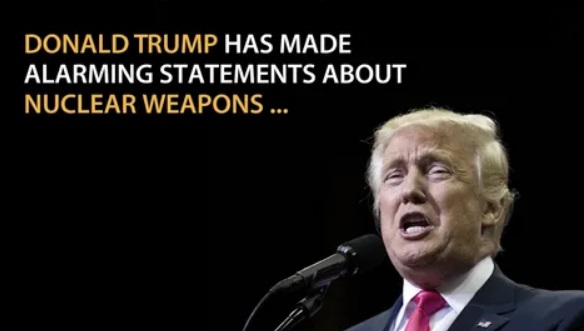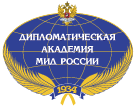
In the middle of a high-stakes diplomatic tour of Asia, President Trump threatened on social media to resume nuclear testing for the first time in more than 30 years. He made the threat just minutes before he was scheduled to meet President Xi Jinping of China, who is overseeing one of the fastest buildups of a nuclear arsenal on earth, ‘The New York Times’ stresses.
“Because of other countries testing programs, I have instructed the Department of War to start testing our Nuclear Weapons on an equal basis,” Mr. Trump wrote on Truth Social, his social media site, saying the process would begin immediately.
The words “on an equal basis” may mean he will show off the power of American missiles or undersea nuclear assets, rather than detonate a nuclear weapon. The United States routinely tests unarmed missiles. Mr. Trump did not clarify his remarks to reporters while greeting Mr. Xi.
While China is rapidly expanding its nuclear stockpile, and deploying missiles in new silos, it has not tested a nuclear weapon since 1996. Russia has not conducted a confirmed test since 1990. And while the United States has never ratified the Comprehensive Nuclear Test Ban Treaty, which bans weapon detonations, past presidents have largely observed its provisions.
It was not clear what prompted the announcement, which Mr. Trump appeared to have made while in Marine One, the presidential helicopter, as he was flying to meet Mr. Xi. But he may well have been angered by recent tests of exotic nuclear delivery systems by Russia.
In the past few days, President Vladimir V. Putin said Russia had successfully tested a nuclear-powered and nuclear-capable cruise missile, and separately, a nuclear torpedo called the Poseidon. The torpedo is designed to travel under the Pacific from Russia’s east to hit the American West Coast.
Those systems were known to observers; Mr. Putin showed them off during Mr. Trump’s first term. It is unclear whether they are fully operational. And he did not detonate any nuclear weapons.
For years, American nuclear weapons engineers have said that more nuclear testing was unnecessary, since they could model tests on a computer rather than risk the kind of detonations that were once set off in the Pacific or underground in Nevada. But in recent years, as the United States has begun to modernize its aging arsenal, there have been calls to resume testing.
Mr. Trump said he had authorized the Pentagon — what he now calls the Department of War — to swiftly conduct nuclear tests. But historically, those tests were done by the Energy Department, which designs and builds America’s nuclear weapons.
The president’s statement came about 100 days before the expiration of the last major nuclear arms control treaty between the United States and Russia, called New START. It limits each country to 1,550 deployed strategic weapons, the kind that can cross continents, usually on intercontinental ballistic missiles.
The treaty cannot be extended again. But after meeting Mr. Trump in Anchorage, Alaska, in July, Mr. Putin suggested that both countries could informally agree to observe the limits on deployed weapons for another year, presumably while they began to discuss a replacement treaty, or some other kind of arrangement to avoid resuming a Cold War-like arms race.
Mr. Trump told reporters he thought Mr. Putin’s idea was a good one. There is no indication any talks with the Russians about a successor to the New START treaty have begun. And the tests of new, exotic weapons delivery systems seemed a particular challenge because they are not covered by the treaty’s limits.
China poses a particularly difficult nuclear conundrum for Mr. Trump. It has never been a party to nuclear arms limitations treaties; during the Cold War, its “minimum deterrent” of just a few hundred nuclear weapons, compared to the thousands held by Russia and the United States, seemed too small to worry about.
But Mr. Xi abandoned that decades-long policy, first secretly, then publicly as China created new missile silos in plain view of American spy satellites. The Pentagon estimates it will have 1,000 or so deployed weapons in 2030, and 1,500 in 2035. That would put it on par with the current deployed arsenals wielded by Washington and Moscow.
Until it reaches rough parity, China appears to have no interest in joining arms control talks; Mr. Trump has suggested he thought he could convince Mr. Xi to join such negotiations.
Should Mr. Trump go ahead and test a nuclear weapon, perhaps at the testing area outside of Las Vegas, it would most likely trigger similar tests by other nuclear-armed states. Among American allies, those include Britain and France and Israel, which has an undeclared arsenal of nearly 100 weapons. India, Pakistan and North Korea also possess growing nuclear stockpiles; North Korea was the last to conduct a confirmed nuclear test, during Mr. Trump’s first term.

Russia is closely monitoring potential violations of the international moratorium on nuclear testing and will respond accordingly if such actions occur, Kremlin Spokesman Dmitry Peskov said at a briefing, commenting on US President Donald Trump’s directive to the Pentagon to conduct nuclear weapons tests.
"The United States is a sovereign nation and has the right to make sovereign decisions," Peskov noted. "However, I would like to recall President [Vladimir] Putin’s repeatedly stated position: if anyone breaks the moratorium, Russia will respond in kind," TASS quotes.
Statement by Robert Floyd, Executive Secretary of the CTBTO
Vienna, 30 October 2025
Robert Floyd, Executive Secretary of the Comprehensive Nuclear-Test-Ban Treaty Organization (CTBTO), issued the following statement:
“I am aware of recent public remarks that draw attention to ongoing concerns about nuclear weapons testing.
The Comprehensive Nuclear-Test-Ban Treaty (CTBT) bans all nuclear explosions. Its International Monitoring System (IMS) can and will detect any nuclear weapon test explosion anywhere on the planet and has successfully detected all six declared nuclear tests conducted this century.
Any explosive nuclear weapon test by any State would be harmful and destabilising for global non-proliferation efforts and for international peace and security. The CTBTO’s monitoring system stands ready to detect any such test and provide the data to CTBT States Signatories.
Like others, I see in this complex and challenging moment an opportunity for world leaders to step forward and work together, on an equal basis, towards the ratification of the CTBT and the shared goal of a world free from nuclear weapons testing.”
Background:
The Comprehensive Nuclear-Test-Ban Treaty (CTBT) bans all nuclear explosions everywhere, by everyone, and for all time. Adherence to the Treaty is nearly universal, with 187 signatories and 178 ratifying States. To enter into force, the Treaty must be ratified by all 44 States listed in its Annex 2, for which nine ratifications are still required.
The CTBTO has established an International Monitoring System (IMS) to ensure that no nuclear test explosion goes undetected. Currently, 307 certified facilities - of a total of 337 when complete - are operating around the world, using four main technologies: seismic, hydroacoustic, infrasound and radionuclide.
The data collected by the IMS has also been used for disaster mitigation such as earthquake monitoring and tsunami warning, as well as research into fields as diverse as whale migration, climate change and the prediction of monsoon rains.
read more in our Telegram-channel https://t.me/The_International_Affairs

 11:41 31.10.2025 •
11:41 31.10.2025 •






















